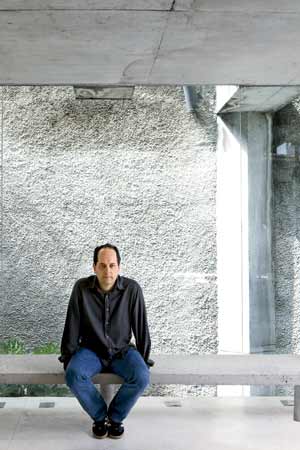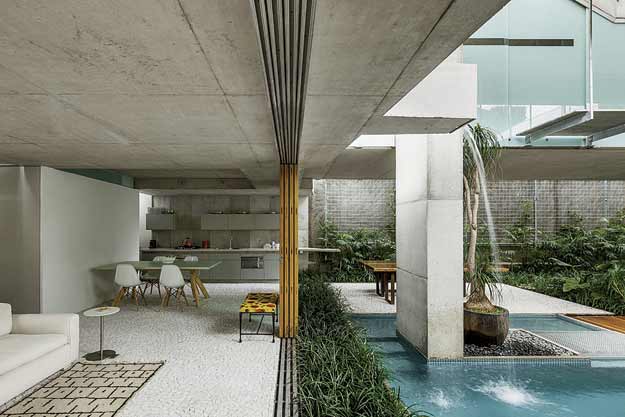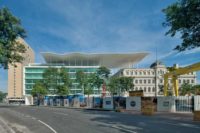
“Last year we were one of a group of architects invited to submit proposals to reimagine the future of the Museum of Modern Art in São Paulo in the city's Ibirapuera Park. We came up with the idea of four elevated pavilions that would be neither inside nor outside the park. They can be built without having to cut down a single tree or close a single road. These new pavilions would run through the city. You could have exhibitions above the avenues leading to the airport and space for temporary artists' residencies running through the park.
The amount of time it takes to get a project approved in a city like São Paulo is absurd. You can say that, here, bureaucracy keeps many jobs locked up in a drawer. But, despite this, there is some very important work being done. Another project here in São Paulo that I deeply admire is the Unified Education Centers [or CEUs, after their initials in Portuguese]. They were developed by Alexandre Delijaicov, André Takyia, and Wanderley Ariza and comprise 21 schools that were set up along the city's poor fringes during the administration of Mayor Marta Suplicy, from 2001 to 2004.
The project was developed at a time when the favelas were a much-discussed subject in architecture schools around the world. This debate always focused on the question of housing, which, of course, is important. But you can transform every house in the favela into a palace and you will still be lacking the most important thing, which is citizenship.
What the CEUs did was create centers of citizenship for these people. Not just for the children who got access to sports, swimming pools, cinema, libraries, and the Internet, but for everyone in the community. Every CEU has a theater, has an orchestra. Now parents and workers could visit these spaces on weekends. The program mobilized these communities. Suddenly, the city has 21 more public theaters, an extra 21 public swimming pools. It was a significant change.
Delijaicov and his colleagues created these centers to promote citizenship. People now have access to services that, historically, they had systematically been denied. It is an incredible concept, but it also underscores the lapses in Brazil's planning. Why did this project not continue? Why was this so hard to do? It should not be a problem to do the things that everyone knows need to be done. But the problem is bureaucracy and the lack of continuity in planning when political administrations change.”





Post a comment to this article
Report Abusive Comment